Table of contents
Understand the meaning of the union between Shiva and Shakti!
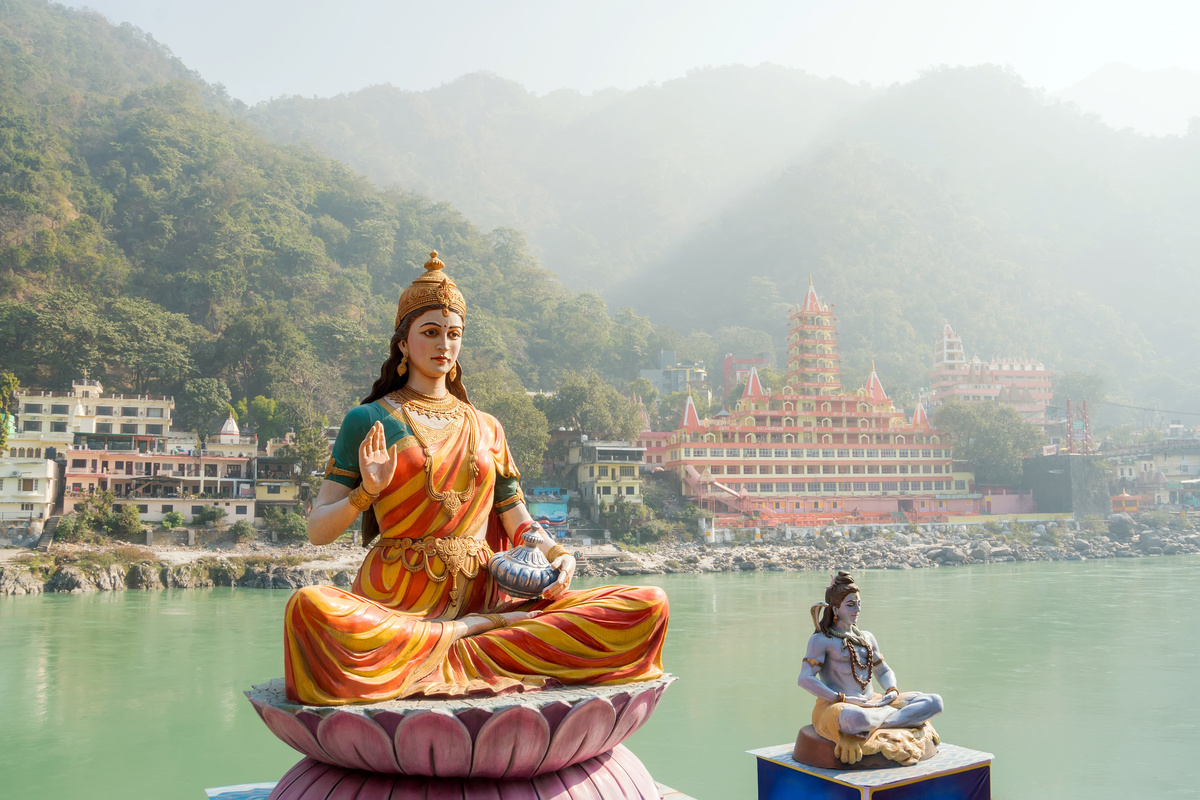
Hindu culture, rituals and festivals have great significance. They are all connected to a certain celestial force. To properly understand the attributes, characteristics and blessings of this celestial force, it is given a name and a form.
Shiva is one of these forces, and is the main one. He is the personification of consciousness. His conscious observation regenerates the seed to actualize the plurality of the universe. Nature, in turn, is Shakti. It creates a life within itself.
Shiva is the observer and Shakti is the observed. Shiva is consciousness and Shakti is energy. When Shiva embraces her, she becomes a Devi, or Goddess, who, like a mother, provides everything life requires to survive. Understand more about the meaning of the union between Shiva and Shakti in this article!
Knowing more about God Shiva
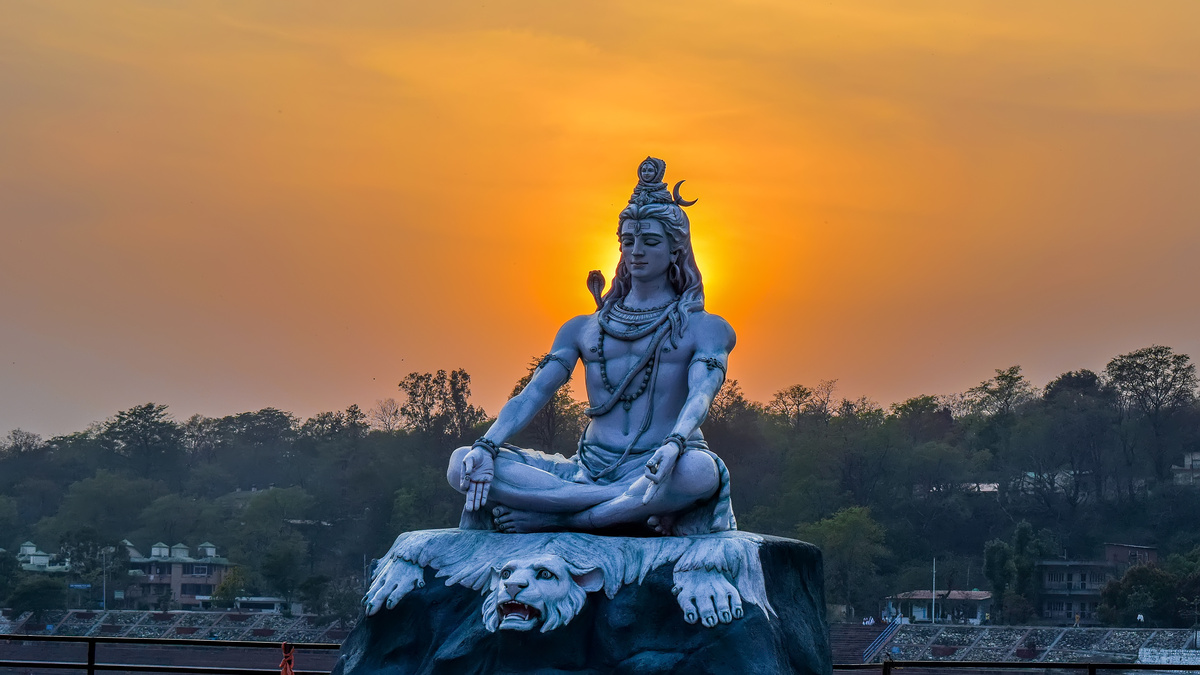
He has bluish skin, has a third eye, is the father of Ganesha and one of the most revered gods in Hinduism.Shiva is one of the most important deities in Hinduism, worshipped by the Indian Shahivist sect as the supreme deity.
He is one of the most complex gods of India, with characteristics that seem to be in opposition to each other. The great teacher, the destroyer and restorer, the great ascetic and emblem of sensuality, the benign shepherd of souls and the choleric avenger are all names given to him.
In the following paragraphs you will learn more about the Hindu god Shiva. His beginnings, history and graphic expression, among other things. Follow along.
Origin and history
There are several different stories of the birth of Shiva, one of the most important and revered gods of Hinduism. Shiva, according to Indian mythology, used to come to Earth in human form and, figuring a sage, ended up serving as an example for future yoga practitioners.
His wisdom annoyed Ravana, King of Demons, who dispatched a snake to assassinate him. Shiva restrained it and, after enchanting it, began to wear it as neck decoration, making it one of his most loyal friends.
Ravana decided to launch a new attack using a threat in the form of a tiger. Shiva, recognizing that he would not be able to control the beast as he did the snake, killed the feline and began using its skin as clothing.
Visual characteristics
The most common representation of Shiva is that of a man with four arms sitting in lotus position. Two of the arms are resting on the legs, while the other two carry symbolic meaning: the blessing is represented by the right hand, while the left hand wields a trident.
The half-closed eyes indicate that the cycle of the universe is in progress. A new cycle of creation begins when he opens his eyes fully, and when he closes them, the cosmos is destroyed until the next phase of creation begins.
Shiva is shown smiling and calm, dressed in a simple animal skin and in an austere environment. His ash-stained body symbolizes his transcendental element in nature, where his existence is superior to material presence.
What does the God Shiva represent?
Shiva is the third god of the Hindu triumvirate. Shiva's job is to destroy the universe so that it can be recreated. Hindus believe that his destructive and recreational abilities are still used to eliminate the illusions and defects of the world, paving the way for positive developments.
This destruction, according to the Hindu religion, is not arbitrary, but beneficial. As a result, Shiva is recognized as the source of good and evil and as one who blends many opposing characteristics. Shiva may be known for his insatiable zeal, which leads him to irrational actions; but he can also be restrained, denying himself all earthly pleasures.
Symbols
Shiva, is connected with various symbols. The Crescent Moon (Ardha-Chandrama) represents time and Shiva wears it on his head to show that he has total dominion over it.
The matted hair (Jata) represents Shiva as the Lord of Wind, who is breathed by all living things. The third eye symbolizes the denial of desire; Shiva worshippers believe it is a symbol for developing the vision of knowledge.
Ganga is the most sacred deity and river. According to the legend, it originates in Shiva and flows through Jata, being symbolized by the jet of water that comes out of his head and falls on the ground.
Shiva's destructive and recreational power over the creatures of the world is symbolized by the snake necklace, while his omnipresence, power and prosperity are symbolized by the Vibhuti, three lines drawn horizontally across his forehead - which also conceal his powerful third eye.
The three functions of the Hindu triumvirate are represented by the Trishul trident. Shiva also wears the Rudraksha necklace with 108 beads produced from his tears which represent the components of the world.
The Drum, Damaru, signifies the cosmic sound that gave birth to grammar and music. Another adornment of Shiva is Kamandalu: a water pot made of dried pumpkin that contains Amrit.
The Kundalas are the two earrings worn by Shiva. They represent the dual natures of Shiva and Shakti, as well as the idea of creation. Nandi, the Bull, is Shiva's vehicle and represents power and stupidity
Knowing more about Goddess Shakti
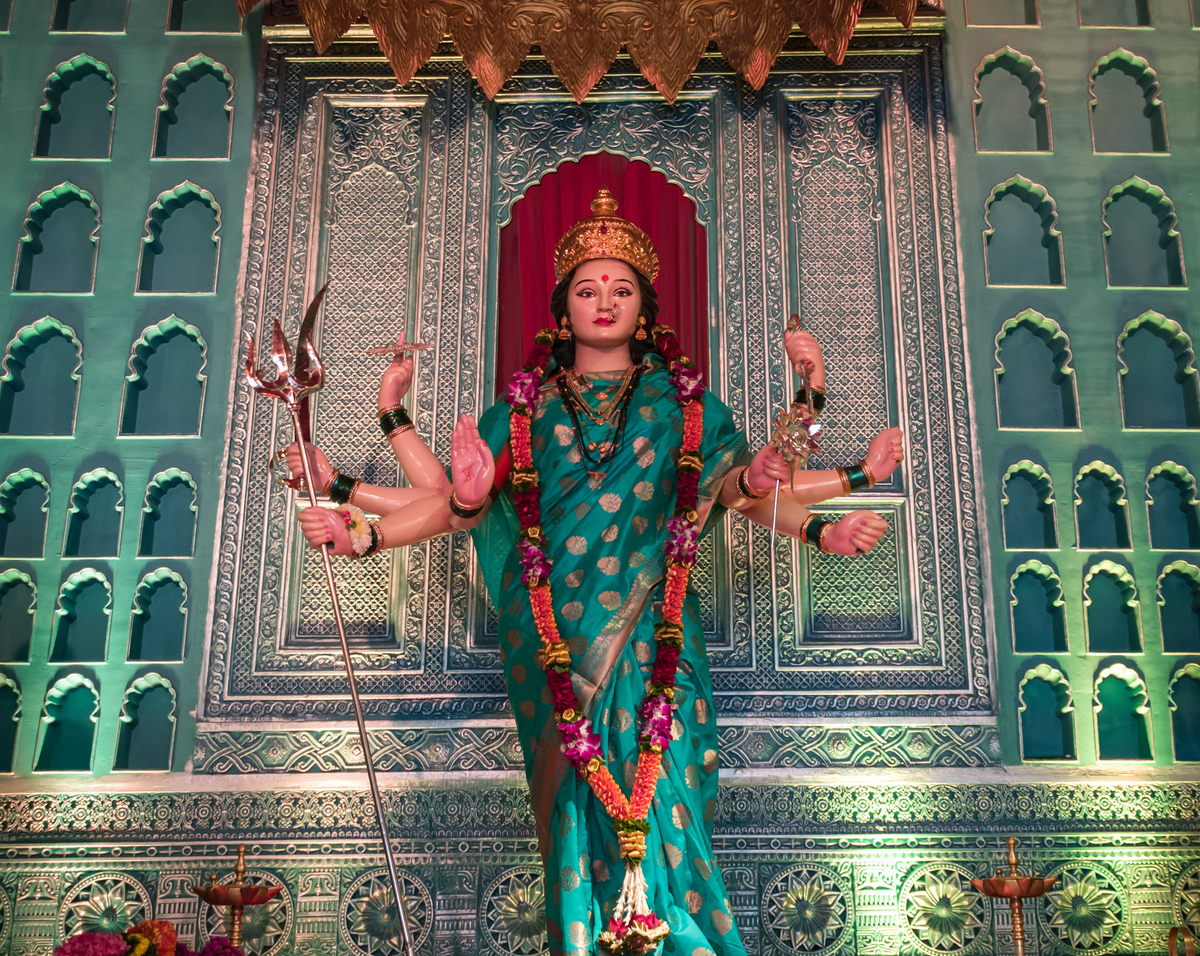
Shakti is one of the most important goddesses in the Hindu pantheon; she possesses a celestial cosmic spirit that portrays the feminine energy and dynamic forces that move through the universe. She is the goddess of creation and transformation and often intervenes to extinguish the forces of evil and restore balance.
Shakti has many forms and titles, including mother goddess, fierce warrior, and black goddess of destruction. Each God of Hinduism possesses a Shakti, or energy power. It is one of the many reasons why she is revered by millions of Indians. Ahead, learn more about this Goddess so important to the Hindu religion.
Origin and history
The various names and incarnations of Shakti have spawned a number of tales. One of the most popular legends is that of Kali, famous for defeating Raktavija, the leader of an army of demons.
According to legend, since Shakti could not hurt Raktavija with her weapons, she murdered him by consuming all his blood. As a result of this narrative, Kali is often shown with a bright red tongue protruding downward on her chin.
She is shown as having four arms: in her left hands she wields a sword and swings Raktavija's head by the hair, while her right hands are raised in a blessing. In addition, Kali also has a necklace made of human skulls around her neck.
Visual characteristics
Shakti is worshipped in many forms. Know now some of the main manifestations of this Goddess.
- Kamakshi is the universal mother;
- Parvati, is the gentle companion of Shiva. She is associated with pleasure, love, marriage, fertility and feminine beauty;
- Menakshi is the queen of Shiva;
- Durga, who rides a tiger that roars when it is about to attack, represents the triumph of good over evil;
- Kali destroys and devours all demons. She is the personification of time and her ethereal appearance represents the unknown future;
- Sarasvati is associated with learning, music and the arts. She is symbolized wearing white and holding a swan or a peacock;
- Gayatri is a female representation of Brahma;
- Lakshmi is depicted with four golden arms distributing gold coins;
- Radha is the Shakti of Krishna, known as the Great Goddess. Absolute Reality is represented by the two together;
- Chamunda is one of the Seven Mother Goddesses and one of the frightening forms of Shakti;
- Lalita, is considered the most beautiful of all the worlds.
What does Goddess Shakti represent?
Shakti is revered for being able to repel attacks on communities, as well as treat the diseases of its residents, as she embodies all celestial power. Her main attributions are protection, communication and femininity, as well as power and invention. In addition, the deity is also often associated with the number six and the lotus flower.
Shakti reveals itself within all followers of Hinduism as a representation of divine force. As a result, the energy allows for demonstrations of intelligence, willpower, action, clarity of communication, and even magic.
Symbols
The number six, magic amulets and the lotus are some of the symbols of Shakti. When we are in danger, Shakti does not stand idly by, She is an energetic and gentle force of change.
In Hinduism, Yoni ("abode," "source," or "womb" in Sanskrit) is also a symbol of Shakti. In Shaivism, a part of Hinduism dedicated to the worship of the deity Shiva, the Yoni is associated with the Lingam, Shiva's emblem.
Together, the two symbols reflect the perpetual process of creation and renewal, the union of masculine and feminine and the sum total of all existence.
Tara: the union between Shiva and Shakti
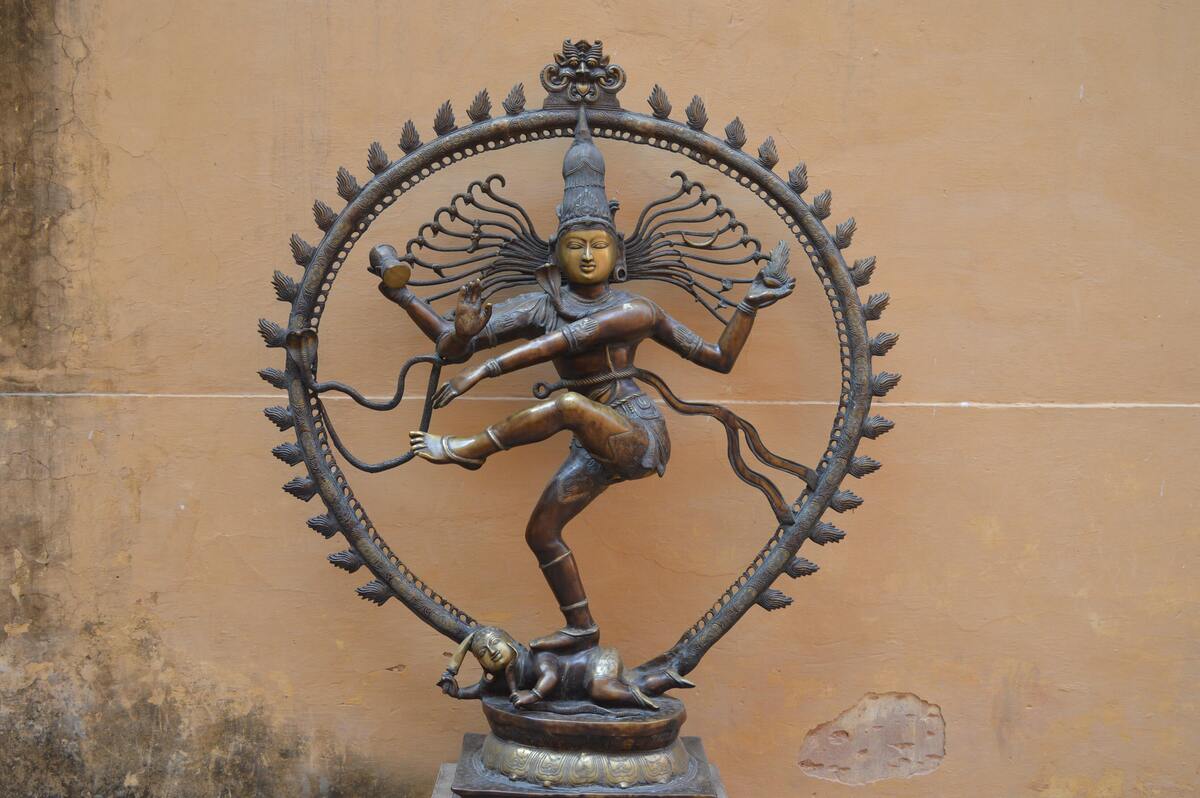
Tara is a female deity who represents compassion, salvation from death and suffering. Her followers call upon her for protection, wisdom and deliverance from dire situations, and she is considered to have been born out of empathy for the suffering world.
Goddess Tara is also considered a protective goddess. She is a manifestation of the primordial feminine force known as Shakti in Hinduism.
Tara was originally a Hindu deity who was later accepted by Buddhism. In certain traditions, she is also called the female Buddha. Tara is the most widely revered deity in Tibetan Buddhism today. Understand the story about the union between Shiva and Shakti below.
Story about the union between Shiva and Shakti
In union, Shiva and Shakti form the half-woman known as Ardhanarishvara. The image of Shiva-Shakti portrays the merging of our masculine and feminine components, resulting in a mystical wholeness within us.
Shiva is the yogic deity with matted hair, a serpent around his neck, bare chest and strong legs. He wields a trident and has a calm demeanor. Shakti has long hair and delicate features and huge almond-shaped eyes. She is dressed in a flowing silk robe and dances with one foot raised.
The artwork exudes harmony, happiness and presence. Shiva-Shakt is the mystical union of male and female consciousness within us and throughout the Cosmos.
Shiva, the boundless force of pure consciousness
Shiva is the Absolute Reality that constitutes our cosmos. He is the source of all that exists, the transcendent component of cosmic consciousness. Shiva is known as the Lord of Yoga, and his consciousness can provide enormous inner strength.
According to Shaivism, He is eternally united with Shakti, His spouse. Shiva's energy is continuous, calm, serene, powerful and completely stationary. He is calm, controlled and compassionate. We can bring the remarkable characteristics of Shiva within us by invoking His pure presence through meditation.
Our masculine attributes include direction, purpose, freedom and consciousness. Shiva's masculine energy is aware of everything that happens in the universe.
Shakti, the primordial energy of creation
Shakti energy has a passionate, raw and expressive side. While Shiva energy is formless, Shakti's is manifested in all living things. Existing things are made of Shakti energy. We cannot have one without the other, for these two divine energies are equal and opposite powers.
When we see Shakti, we can feel our Shiva energy and when we meditate, cultivating a clear presence and purpose, we are resting in our inner Shiva nature. Shiva reserves space for Shakti to move and guides the shape-shifting energetic flow of this Goddess.
What is our role in this union?
Shiva and Shakti join forces to create the universe in all its forms. This is the immediate experience of qualified methods and knowledge, as well as a union of male and female forces.
Our inner Shiva and Shakti, when balanced and united, experience existence as a dynamic totality. We have a clear vision for the future, we become prepared to trust and flow with all that life throws at us.
Our desire to seek love outside fades as we become more whole. The pleasure of this combination of our inner masculine and inner feminine can be felt and so we generate more harmonious relationships.
Shiva Shakti Mantras
The Shiv Shakti Mantra is chanted by many devotees. Its meaning is profound as it invokes the energies of Shiva and Shakti. Shiva is pure consciousness and Shakti is the force of creation, power, energy and nature.
They are part of one creation that manifests when Shiv Shakti combine.The Shiv Shakti Mantra is chanted to bring benefits, enlighten the soul and bring well-being and prosperity into the lives of devotees.Learn the Shiv Shakti Mantra:
"Oh, the divine couple Shiva Parvati! O! You, the protectors of this universe, Along with Lords Brahma and Vishnu We pray to You for our welfare, prosperity and the enlightenment of our souls. Then let the water drain into the ground."
From the union between Shiva and Shakti, all creation flows eternally!
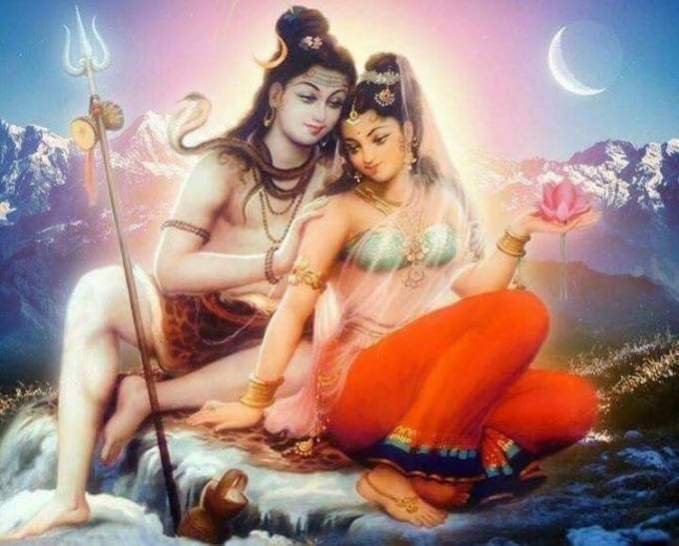
Understanding the natures of Shiva and Shakti will reveal our inner Divine. According to Shaivism, each of us carries a celestial masculine force in the form of the Hindu deity Shiva and a divine feminine energy in the form of the goddess Shakti.
In both men and women, Shiva and Shakti are present. In our existence, we all have the divine masculine side (Shiva) and the divine feminine side (Shakti). It is believed that our feminine side should be on the left side of our body, while the masculine side is on the right.
However, the most important thing to remember is that we all have these energies within us, and when brought together, they provide perfect harmony, joy and presence to our very being.

